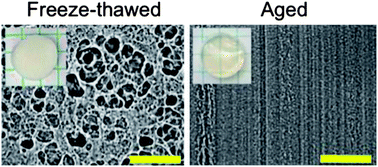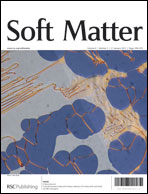The biocompatibility, processing ease, and mechanical properties of freeze-thawed poly(vinyl alcohol) (PVA)-based hydrogels have encouraged significant research toward developing this material for various biomedical applications. Crystallization that occurs during the freeze-thawing process is cited in the literature as the primary mechanism responsible for the resultant mechanical properties. Further analysis, however, shows the presence of two unique mechanisms that contribute to PVA's mechanical properties. During freeze–thaw cycling water freezes causing phase separation, which facilitates crystallization. The impact of phase separation during freeze–thaw cycling was investigated by comparing freeze-thawed and aged PVA hydrogels. Aged hydrogels were not prepared by freezing and, therefore, did not exhibit significant phase separation. The amount of phase separation was discerned using optical microscopy in the hydrated state. Crystallinity and mechanical properties were also evaluated as a function of the number of cycles (for freeze-thawed gels) and aging time (for aged gels). For freeze-thawed hydrogels, crystallinity deviated significantly from the trend observed in compressive modulus, indicating that crystallinity was not the only factor determining the hydrogel's mechanical properties. Phase separation was found to occur during freeze–thaw cycling independently of crystallization, especially at later freeze–thaw cycles (after the third). The trends observed for both crystallinity and modulus for aged hydrogels, however, were in better agreement with each other. Further evaluation of the mechanical properties of aged and freeze-thawed hydrogels with similar crystallinities indicated that freeze-thawed hydrogels have significantly higher modulus values (p < 0.05). As a result, phase separation, independently of crystallization, was determined to have a significant effect on gelation during freeze–thaw cycling. In particular, PVA-rich regions that are formed during phase separation, without additional cross-linking, are believed to have a significant effect on the resultant mechanical properties.


 Please wait while we load your content...
Please wait while we load your content...